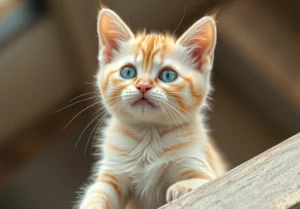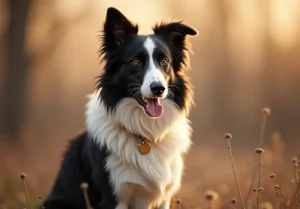Cats are known for their impressive jumping abilities, often leaping to great heights and distances with ease. But have you ever wondered why they can jump so far? Let’s uncover the science behind this feline feat.
Cats possess unique anatomical and physiological features that enable them to jump great distances. From powerful hind leg muscles to flexible spines, these characteristics play a crucial role in their exceptional jumping abilities.
The Anatomy of a Cat’s Jump
Have you ever marveled at how high and far cats can leap effortlessly? This incredible ability is attributed to their remarkable anatomy, specifically their powerful hind legs. Cats possess strong muscles in their hindquarters, allowing them to generate an incredible amount of force when jumping. In addition, their long, flexible spine acts like a spring, storing and releasing energy as they propel themselves into the air.
Another key physical attribute that enables cats to jump so far is their strong and agile paws. Their flexible toes give them an excellent grip on various surfaces, while their sharp claws provide added traction. These features work in tandem to help cats launch themselves with precision and accuracy, reaching impressive heights with ease.
Cats also have a well-developed sense of balance and exceptional coordination, which play a significant role in their jumping prowess. Their keen awareness of their surroundings allows them to calculate the distance to their target accurately, adjusting their trajectory mid-air if needed.
Understanding Cat Behavior
Apart from their physical attributes, a cat’s natural behavior and instincts also contribute to their exceptional jumping abilities. Cats are innate predators, and their hunting instincts drive them to pursue prey with agility and speed. This instinctual drive translates into their ability to leap gracefully and swiftly when needed.
Furthermore, cats are territorial animals, and jumping serves as a crucial aspect of their territorial marking and defense. By reaching higher vantage points through jumping, cats can survey their surroundings and assert their presence in their territory effectively.
In addition, play behavior also influences a cat’s jumping skills. Regular play sessions help cats hone their coordination, strength, and agility, all of which are essential for executing precise and powerful jumps.
Here are a few tips to help improve your cat’s jumping abilities: 1. Provide engaging toys that encourage physical activity and jumping exercises. 2. Create vertical spaces like cat trees or shelves for your cat to climb and jump. 3. Incorporate interactive play sessions to stimulate your cat’s natural hunting instincts.
By understanding the anatomy and behavior that underpin a cat’s jumping abilities, we can truly appreciate the incredible athleticism and agility of these captivating creatures.
The Role of Muscles in Cat Jumping
Have you ever marveled at how high and far cats can jump? Well, it’s all thanks to their impressive muscles, especially in their hind legs. Cats have incredibly strong leg muscles that allow them to generate explosive power when they spring into action.
When a cat is ready to jump, its muscles contract rapidly, storing potential energy like a coiled spring. As the cat launches itself into the air, these powerful muscles relax and extend, propelling the feline to impressive heights. Additionally, cats have a unique structure in their hind legs that allows them to use their tendons to lock in position, creating a more efficient and powerful jump.
So next time you see a cat effortlessly leap onto a high shelf or gracefully pounce on a toy, remember that it’s all thanks to their remarkable muscles at work!
The Physics of Cat Jumps
Curious about the science behind a cat’s extraordinary jumping ability? Let’s break it down for you. When a cat prepares to jump, it crouches down low, getting ready to spring into action. As the cat pushes off the ground, it generates a significant amount of force through its powerful leg muscles.
Now, here’s where things get interesting. Cats rely on a physics principle known as the conservation of angular momentum to maximize their jumping distance. By tucking in their limbs close to their bodies mid-jump, cats decrease their moment of inertia, allowing them to rotate faster and cover more ground.
In essence, cats are expert physicists in their own right, using the laws of physics to their advantage when it comes to making those incredible jumps. So, the next time you witness a cat gracefully leap from one perch to another, remember it’s all about physics in action!
Comparing Cat Jumps to Other Animals
Did you know that cats are among the best jumpers in the animal kingdom? These feline acrobats can leap around six times their body length in a single bound – now that’s impressive! When compared to other animals, cats are rivaled only by frogs, grasshoppers, and certain species of kangaroos in their jumping abilities. So, the next time you see your cat effortlessly leaping onto a high shelf, remember that they are natural-born jumpers with unmatched agility and grace.
Training Tips for Improving Cat Jumping Skills
Looking to enhance your cat’s jumping skills? Try incorporating interactive toys and vertical spaces into their environment to encourage them to jump and climb. You can also set up obstacle courses using boxes or furniture to provide a fun and challenging jumping experience. Another effective method is using treats or toys as incentives to entice your cat to jump higher or further. Remember, practice makes purr-fect, so be patient and consistent with your training efforts.
Training Tips for Improving Cat Jumping Skills: 1. Use interactive toys and vertical spaces to encourage jumping. 2. Create obstacle courses with boxes or furniture for a fun challenge. 3. Incorporate treats or toys as incentives for higher jumps. 4. Practice and consistency are key for improving jumping prowess.
(Unique Insight: Cats also rely on their impressive leg muscles, which are designed for explosive bursts of power, to propel them to great heights. By focusing on activities that strengthen these muscles, such as climbing and pouncing, you can further boost your cat’s jumping skills.)
Fun Facts About Cat Jumps
Did you know that a cat can jump up to six times its body length in a single leap? That’s like a human jumping the length of a basketball court! This incredible ability is thanks to the powerful muscles in a cat’s back legs. These muscles act like springs, propelling the cat into the air with impressive force.
Another fascinating fact about cat jumps is that they have an innate sense of balance and coordination. This, coupled with their flexible spine, allows them to land gracefully on their feet every time. It’s no wonder cats are known for their agility and acrobatic feats!
And here’s a fun tidbit: the world record for the highest jump by a cat is a whopping 7 feet and 5.5 inches! This impressive feat was achieved by a cat named Waffle, showing just how extraordinary cats’ jumping abilities can be.
So next time you watch your feline friend effortlessly leap onto a high ledge or chase after a toy with lightning speed, remember just how remarkable their jumping prowess truly is.
Cat Breeds Known for Impressive Jumps
Some cat breeds are renowned for their exceptional jumping skills and agility. One such breed is the Abyssinian. These cats are known for their boundless energy and love of jumping. With their strong muscles and athletic build, Abyssinians can leap to impressive heights with ease.
Another breed known for its impressive jumping abilities is the Bengal. Bengals are highly active and have a natural instinct for climbing and leaping. Their powerful hind legs give them the strength and agility to jump long distances, making them excellent hunters and climbers.
If you’re looking to adopt a cat that excels in jumping, consider breeds like the Siamese, Burmese, or Maine Coon. These breeds are known for their athleticism and love of play, making them masters of the art of leaping.
So, if you want a cat that can soar to new heights and amaze you with their aerial abilities, these breeds might be the perfect choice for you.
Cat Jumping Safety Tips
Curious about why cats can jump so far? It all comes down to their powerful leg muscles. These muscles allow them to leap great distances with ease, whether they’re pouncing on prey or jumping onto high surfaces. But with great jumping ability comes great responsibility. Here are some essential safety tips to keep in mind when letting your cat indulge in their natural jumping instincts:
- Secure Your Space: Make sure your home is cat-proofed to prevent any potential jumping hazards. Keep fragile items out of reach and secure any tall furniture that your cat might attempt to jump on.
- Provide Scratching Options: Cats love to jump and scratch. Offer sturdy scratching posts and pads to satisfy your cat’s need to stretch, scratch, and jump without damaging your furniture.
- Avoid High Jumps: While cats are adept jumpers, long falls can lead to serious injuries. Keep windows and balconies securely closed to prevent your cat from leaping to unsafe heights.
- Regular Vet Check-ups: Ensure your cat’s joints and muscles are healthy by scheduling regular check-ups with your vet. They can provide guidance on how to keep your cat’s jumping activities safe and fun.
Remember, cats are curious creatures with fantastic jumping abilities, but it’s important to create a safe environment for them to showcase their skills without risking harm. By following these safety tips, you can ensure your feline friend enjoys their jumping adventures while staying safe and sound.
Investing in a sturdy cat tree or a designated climbing area can provide your cat with a safe outlet for their jumping and climbing instincts. By having a designated space for these activities, you can help minimize the risk of your cat jumping onto potentially dangerous surfaces.
Alex, a passionate animal lover, has experience in training and understanding animal behavior. As a proud pet parent to two dogs and three cats, he founded AnimalReport.net to share insights from animal experts and expand his knowledge of the animal kingdom.




